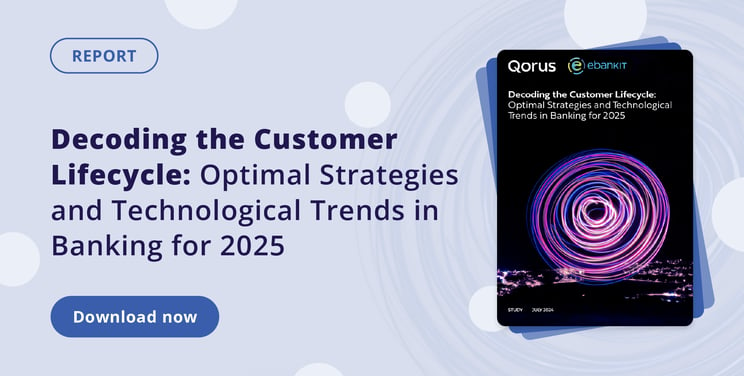Revolutionizing customer service: the significance of customer data
During a recent webinar on banking customer lifecycles led by ebankIT and Qorus, the focus was on the crucial role of customer data and the necessity of enhancing its accessibility and utilization within the banking sector.
Radu Topilceanu, Executive Vice President and Head of Neo and Personal Banking at Mashreq Bank, stressed the significance of consolidating and sharing data from diverse databases to leverage machine learning algorithms for precise client segmentation and behavior analysis.
Our customers increasingly expect us to interact with them digitally. We have reached a stage where we have digitalized all key functionalities.
- Radu Topilceanu, Executive Vice President and Head of Neo and Personal Banking at Mashreq Bank.
The Bank has come to recognize that the future of the consumer banking segment is digital. While human interactions remain valuable, the imperative now lies in achieving comprehensive digitalization from the initial acquisition to the entire customer lifecycle, shaping the evolution of the banking industry.
How banks leverage customer data for competitive advantage
There is immense potential for enhancing the utilization of customer data. Fundamentally, banks must intensify their efforts to make data more accessible and ensure the consolidation and seamless communication of the numerous databases within each bank. By incorporating a machine learning algorithm, banks can effectively segment clients in real-time and gain deeper insights into client behavior.
Nuno Reis IT Director for Architecture & Transformation and Data & Insights at Millenium BCP emphasizes the importance of accurate data in providing insights throughout the customer lifecycle. He discusses the development of an Enterprise Data Platform, which helps predict customer behavior and transactions up to three months in advance.
This predictive capability is useful for engaging with clients, though some may find it concerning. Reis notes that data is a critical element across industries, particularly in banking, which is heavily investing in data more than other sectors like retail and telecommunications. He also touches on the integration of data into customer relationship management and its application in contact centers.
Recent advancements in contact centers focus on the use of generative AI for call analytics. This technology helps understand why customers are calling and aim to improve app features or provide relevant options.
Nuno Reis believes this will lead to a significant transformation in customer service, driven by generative AI and various tools like chatbots, APIs, and analyzers. These advancements will enhance customer assistance, signaling a major change in the industry.
Transforming customer experience with banking data insights
In short, financial institutions are directing more resources toward enhancing self-service capabilities, with a specific emphasis on mobile platforms. Despite having a lot of data, banks still have room to improve their understanding of customers to provide better offers and reduce customer churn.
The emphasis is on improving the onboarding process to attract and retain the best clients. Compared to retail, the self-service experience in banking is still underdeveloped, highlighting the need for further investment and focus in this area.
Watch the full discussion
For further insights on how to optimize the customer lifecycle journey for your financial institution, download the complete report.






%20without%20SAM%20-%20Maturity%20Level%20-%202-KO%20edit.webp?width=160&height=57&name=67768-ebankIT%20Platform%20-%20CMMI%20Development%20V2.0%20(CMMI-DEV)%20without%20SAM%20-%20Maturity%20Level%20-%202-KO%20edit.webp)
